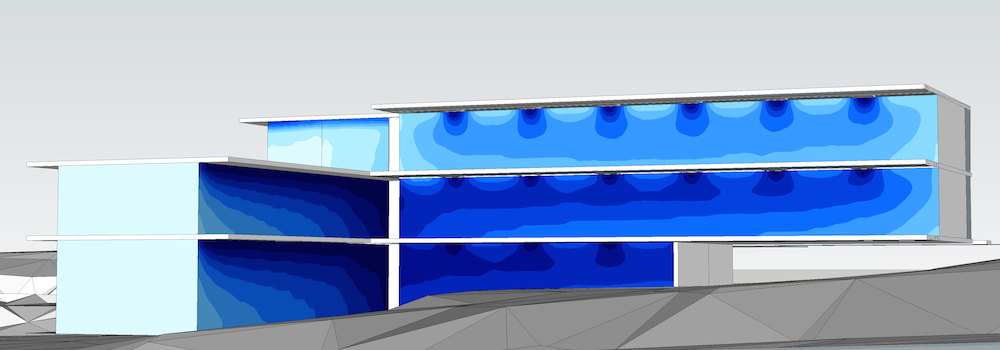
SkyViewFactor extension calculates the percentage of sky visible on
surfaces of the SketchUp model. Sky view factor values can be represented
as percentages of total sky surface or as a solid angle.
SkyViewFactor extension is oriented towards early project design phases,
when level of details of future building is rather low, and when only
basic information about building environment, position and geometry are
defined.

Information about sky view factor for various building surfaces can influence important decisions related to building lighting and thermal strategies:
Sky view factor (SVF) on a point on the facade depends on building site environment geometry (relief, obstruction buildings) and on building shape. It is independent of the materials used on the facades or the interior spaces.
Open SketchUp model. Follow recommendations to prepare your model for DL-Light calculations.
Open SVF dialog from toolbar
![]() or menu option
Extensions -> De Luminae -> Sky View Factor -> Activate
extension
and enter the calculation parameters.
or menu option
Extensions -> De Luminae -> Sky View Factor -> Activate
extension
and enter the calculation parameters.
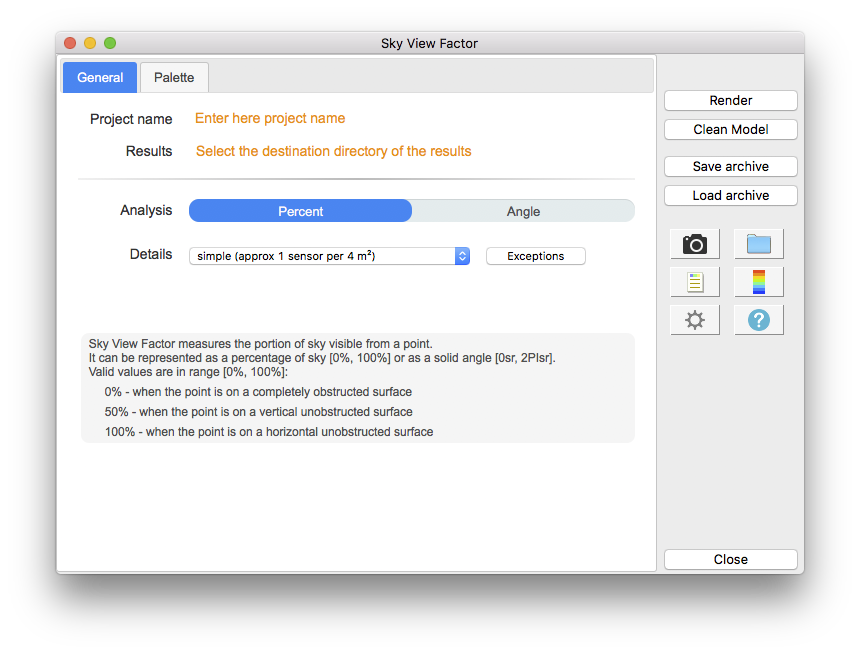
Fields description:
Project name - project name is used during export and for output filename generation. The SketchUp model name is used by default.
Results - directory where model
will be exported for calculation.
When calculation is started model geometry and resulting files
will be saved in
skyviewfactor_output
subdirectory.
For SketchUp projects stored on network disk (Windows), see
Work on a copy of the model.
Analysis - Results represented by false color textures can have different meanings depending on selected value:
In trial version of the extension only 'Percent' option is supported. For more details read License information.
Details - Models may require different density of sensors. Level of details definition is directly connected to number of sensors or their density on surfaces. Big unobstructed surfaces may need lower level of details, with few sensors only, while smaller surfaces or surfaces with complex obstructions may require very high level of details. Level of details determines number of sensors for calculation, and has a major influence on calculation time and results accuracy.
DL-Light allows to choose:

See sensors selection for more information on the choices of proposed sensors.
Palette of false colours can be defined with precision. 3 options for palette are given, Automatic, Gradient and Custom:

After all data are entered in SVF dialog, select surfaces and press
Render or
 button.
button.
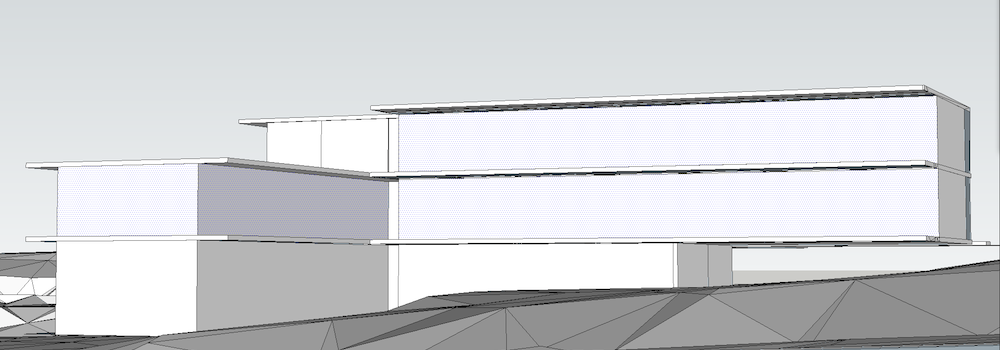
Calculation time depends on number of selected surfaces, level of sensors details and model complexity.
When results are imported, selected surfaces will have appropriate false colors and Palette and Report dalogs will be opened.
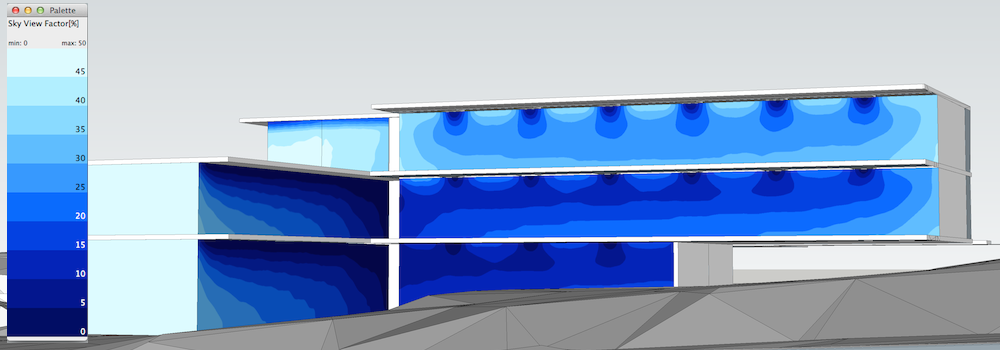
Results analysis.
The Report dialog
 displays the distribution of results over current palette, and
calculation input parameters.
displays the distribution of results over current palette, and
calculation input parameters.
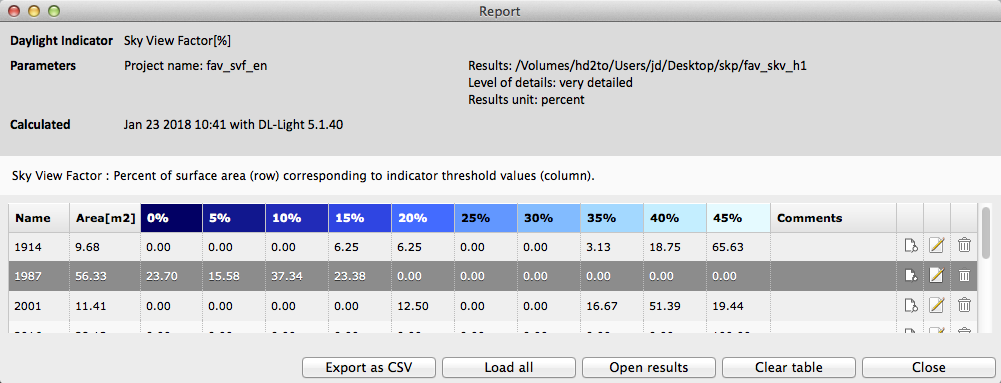
Show/Hide Sensors and Values
![]() explores results directly in the model for each sensor.
explores results directly in the model for each sensor.

For further calculations in the same model:
 .
.
DL-Light uses a calculation cache algorithm. It automatically detects if a surface requires recalculation or if a previous result can be reused. By default, the cache keeps the information of the last 10 calculations (value configurable in the preferences).
Archiving results:
DL-Light allows to archive all the results of a calculation: reports, textures and calculation steps (exported Radiance model, weather file, ...). This archive can be reloaded on the model, subject to using exactly the same model as during the calculation.
See the page Archiving results for more informations about this feature.
See the page Comparison of results for more informations about the comparison of archives.
Snapshots:
Current SketchUp model view with imported results can be exported with
palette
 or without palette
or without palette
 to png format. To explore created images user can open folder where
they are saved
to png format. To explore created images user can open folder where
they are saved
 .
.
This option is not supported in trial version of the extension (see
license information).
